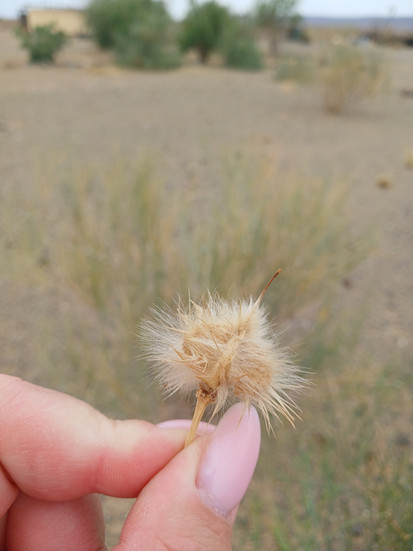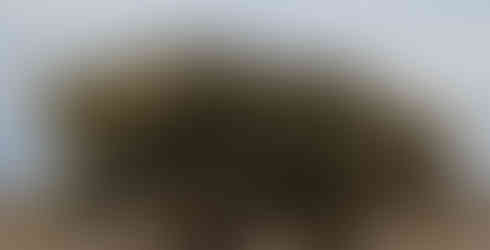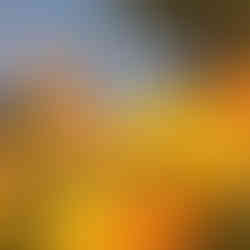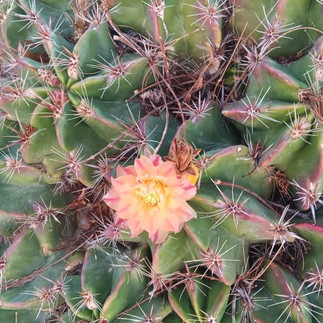Green Shoots & Gravel Plains
- pauljacquin7
- Sep 28
- 2 min read
Rewilding notes from the Nama Karoo
Rain check: With only 50–100 mm a year (sometimes all at once, sometimes not at all), Löwen River Rewilding sits in the Nama Karoo of southern Namibia — the same biome that spills into South Africa’s Northern and Western Cape and makes hikers go “wow”.
Trees? Rare. Tough customers only. This is the transition zone between Dwarf Shrub Savanna and Karas Dwarf Shrubland, where grasses and shrubs do most of the heavy lifting.
Place matters: Chamaites, our farm, is shaped by basalt, sandstone, and dolomite mountains; the Löwen River canyon on one side; big open gravel plains on the other. Drought and decades of overgrazing left this fragile land worn out.
That’s where we come in: with a plan (and a few spades).
The Fix-It Kit (Field Edition)
We are blending age-old methods with a few tweaks
✅ Half-moons (bunds): Catch seeds and rain on the plains
✅ Gabions: Slow the rush, stop erosion, give water time to sink
✅ Bush-packing: Lay branches over bare soil. Shade it. Slow wind. Hold moisture. Create tiny seed nurseries
No Hollywood time-lapse. Recovery takes seasons. Rain = accelerator. The 3-6mm a few weeks ago? We danced. The 25 mm last night? We danced again (less gracefully, more gratefully).
🌱 Who’s Growing Where
Walk through Chamaites and you will meet our resident trees: Camel Thorn, Sweet Thorn, Black Thorn, Quiver Tree, Buffalo Thorn, Greenhair Tree, Wild Ebony.
Shrubs? Smelly Shepherd’s Bush (yes, it lives up to the name), Karas & Candelabra Euphorbia, Desert Broom, Three Thorn, Trumpet Thorn, some Zygophyllum — and the stubborn Renosterbos (“rhinoceros bush”). Livestock won’t touch it, which is why it thrives. Plants 1 — Goats 0.
We are estimating a tally of 35+ tree and shrub species, plus countless herbs and crawlers that need identifying. Southern Namibia remains a research frontier — a “blue ocean” (Atlantic style) for plant nerds and curious minds.
“Sometimes Not Doing Anything Is Best”*
* John Mendelsohn, our friend and mentor
(Paul aside: still deciding whether that’s Rewilding advice or life philosophy. Either way, different from “doing nothing” in John’s witty style.)
Meanwhile, we are doing a few things: propagating Camel Thorn, Quiver Tree, Wild Ebony, Desert Broom, and Karas Euphorbia. Once the greenhouse is up, creating a safe space for plants to thrive (and fewer nibbling incidents), we will do even more. We will replant homegrown natives where they belong and add some nutritious grasses. Suddenly you’ve got the building blocks of an ecosystem.
🧪 Home Turf, Same Ethos
In our home garden we’re swapping ornamental aliens for hardy locals, and experimenting with self-sufficiency. Steven’s tomatoes are thriving, whilst a self-appointed quality inspector in the form of a Four-striped Grass Mouse frustrated our harvest. Maybe, just an excuse for funding a greenhouse.

🌍 The Long Game
No shortcuts. Just cycles; starting with plants. Because plants are the foundation of rewilding: they stabilize soil, feed wildlife, regulate water, and set the stage for everything else. Bring back the vegetation, and biodiversity follows.
So, we will keep counting any wins — one bund, one bush-packing, one seedling at a time.
special credits to Lola (aka Kerstin) for her work on the green sprouts, this blog and the pictures















































Comments